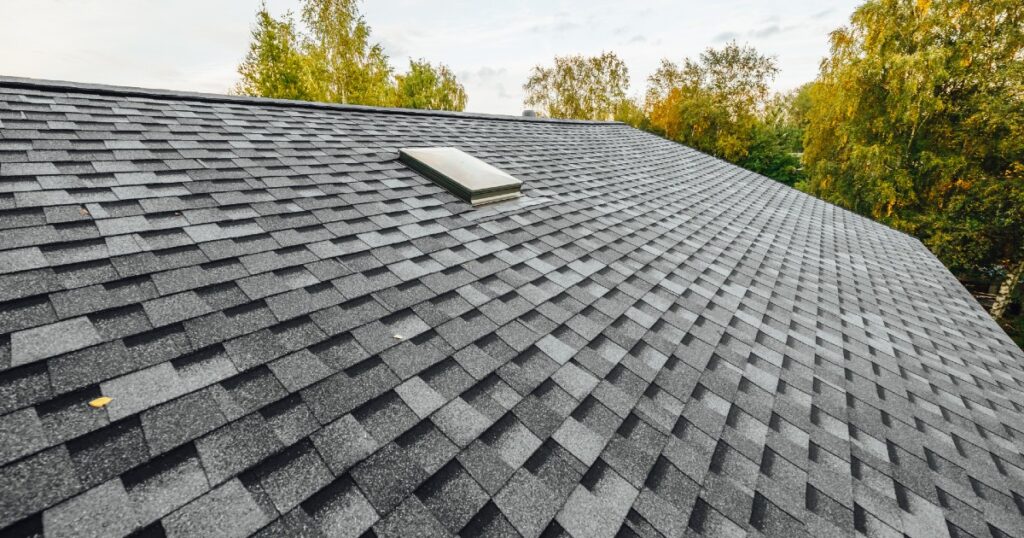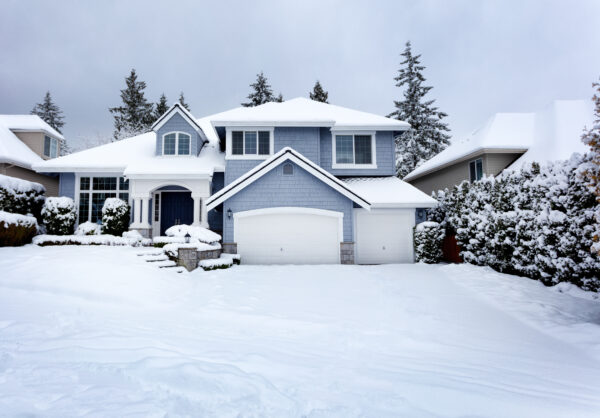
Unlock the full potential of your roof with the power of proper ventilation! Gone are the days of worrying about your attic turning into a sauna during scorching summers or a breeding ground for mold during chilly winters.
Let’s explore how optimal ventilation not only safeguards your roof but also enhances your home’s efficiency and comfort.
The Primary Benefits of Proper Roof Ventilation
1. Enhance your home’s energy efficiency
When a roofing system isn’t properly ventilated, hot, stagnant air builds up under your roof, heating your ceilings and making its way into your home interior. The result? Your air conditioner works harder, wears out quicker, and costs you more in utilities every month.
Roof ventilation lowers the amount of heat that can get trapped in your attic each summer, which is reflected in a decrease in your overall energy usage, which lowers utility bills.
2. Prevent moisture buildup and damage
When your home’s heat rises from your interior and comes into contact with cold surfaces, condensation may become a problem—particularly during the winter. Without proper ventilation, moisture builds up. And if it goes unnoticed, unhealthy mold can develop—and grow. If you don’t attend to the problem, you’ll find that suddenly your highest level’s ceilings are moisture stained. These brownish blemishes wreck the look of your interior, and are a sign there’s an issue that needs attention.
Persistent moisture issues in your attic due to improper ventilation can even result in structural damage to your rafters, trusses, and your roof. That’s serious! The good news is that you can avoid all these issues by simply installing the proper ventilation when you have your roof replaced.
3. Extend the lifespan of your roof
Without suitable ventilation, a home’s attic space overheats. The result? Your roof gets too hot, causing your underlayment and roof shingles to dry out and crack over time. Moisture intrusion typically results, leading to much-needed repairs.
The good news is that appropriate ventilation keeps moisture from building up in your attic, bypassing the need for roof repairs and helping to lengthen the lifespan of your roof.
4. Ensure optimal roof performance
Your roof’s appearance is important, but its performance is vital to your home’s protection. And good attic ventilation ensures your roof performs as it was designed to.
5. Create a comfortable home environment
When you have proper ventilation, it helps regulate the temperature in your attic, making your interior more comfortable throughout the year.
6. Expel hot air in the summer and prevent ice dams in the winter
During the summer, the purpose of venting is to expel hot air from your roof and attic and to lower the temperature in your attic. During the winter, ice dams are associated with poor attic ventilation, and they cause water to back up under your eaves and into your attic space. When it’s cold outside, proper roofing ventilation helps maintain a cold roof temperature to avoid ice dams created by melting snow, and to vent moisture that moves from your interior to your attic.
7. Increase the quality of the air inside your home
With the right ventilation, excess moisture and pollutants are removed from your attic, improving the air quality in your house.
8. Help keep your roofing warranties intact
When you have a new roof installed, it comes with two warranties: a workmanship warranty and a material warranty. The material warranty is from the manufacturer. This protects your investment if there are issues with the materials’ function or any manufacturer defects. But, if your attic isn’t ventilated properly, your warranty will be voided because that’s an indication your roof wasn’t installed properly.
How to Know if Your Home Lacks Proper Ventilation
Are your highest floor’s rooms extra hot during summer months?
If this is the case, you likely don’t have enough attic ventilation, and your roof is at risk.
Is mold present in your attic?
If so, you don’t have enough air circulating in your attic to ensure your roof offers high performance for as long as it was designed to.
Are your asphalt roof shingles cracked or curled?
If you spot damaged shingles, it’s very possible that the root cause is poor attic ventilation. Contact a reputable roofing contractor and have your roof and attic inspected.
Do ice dams tend to form on your exterior during the winter?
Icicles are pretty, but they are dangerous when they fall, and can damage your roofing components. If ice dams form on your roof, you don’t have enough ventilation.
Does your roof decking look discolored?
Your roof decking should not show signs of moisture damage like discoloration. If decking looks blotchy, it’s likely due to inadequate ventilation.
Are your interior ceilings overly hot on warm days?
A simple test can be done during summer months to determine if your attic is properly ventilated or not. Touch your ceiling on a warm day. If ceilings are hot, you know your attic is too hot and probably not well ventilated.
Get a High-Performance, Durable Roof Replacement for Your Minnesota Home
Stay ahead of the game by heeding the warnings of insufficient roof ventilation, a factor that could compromise the longevity of your beloved home. As your roof ages or faces damage, safeguarding your significant investment becomes paramount.
Since 1983, Lutgen Companies has served over 10,000 homeowners. We are a GAF Master Elite Contractor, a status only 2% of roofing companies in America are awarded.
Our hands-on approach to selecting roofing components adds a personalized touch to your exterior upgrade. Learn how our roofing services can ensure your home has proper ventilation so you can enjoy the high performance a new roof is designed to deliver for the full lifespan of your roof.




